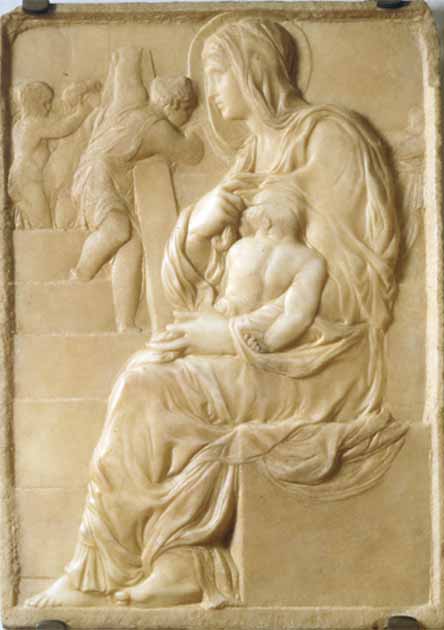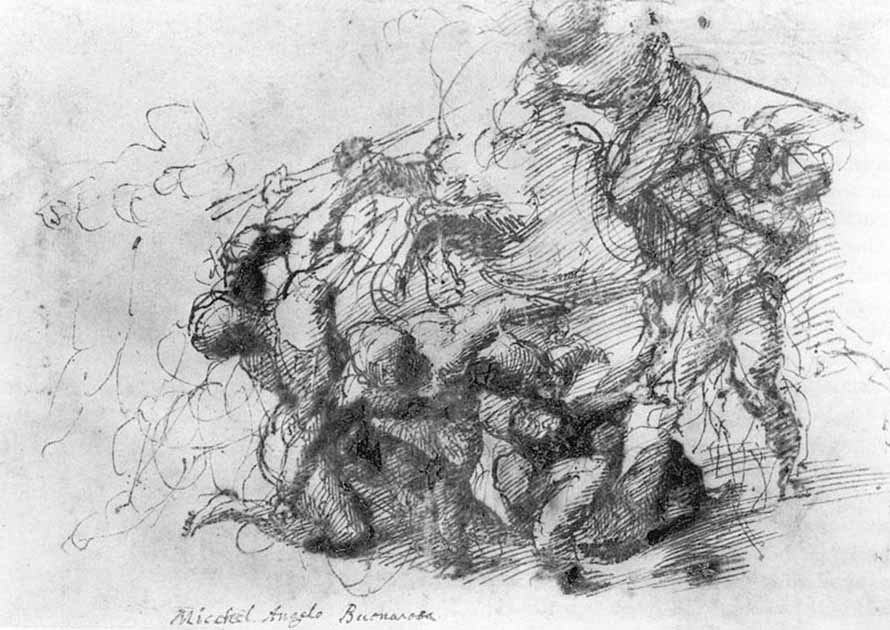The rivalry between Leonardo da Vinci and Michelangelo, two of the most renowned artists of the Renaissance, is a fascinating story that illustrates the competitive spirit and the contrasting personalities and styles of these two titans of their time. Let’s explore why and how the famous Renaissance men did not get along.
Da Vinci’s Background
Leonardo da Vinci (1452-1519) was born in Vinci, Italy, and was 23 years older than Michelangelo. He was known for his diverse interests, which included painting, science, mathematics, engineering, anatomy, nature, and more. Two of his most famous works are The Last Supper and Mona Lisa. He elegantly fused art and science in his works.
Da Vinci was an illegitimate child to Ser Piero, a notary, and a peasant woman named Caterina. His illegitimate status meant he did not receive a typical formal education in Latin and Greek. This lack of classical education might have led Leonardo to pursue a more empirical approach to learning, based largely on observation and experience.
He moved to Florence as a boy and started his apprenticeship under the artist Verrocchio. This environment was rich in various disciplines, including painting, sculpture, and engineering. Leonardo's exposure to these diverse fields shaped his interdisciplinary approach to art and science. Being in Florence, the cradle of the Renaissance, surrounded by humanist ideas and an emphasis on artistic innovation, undoubtedly had a profound impact on Leonardo.

‘The Baptism of Christ’ (circa 1475) by Verrocchio and Leonardo, Uffizi Gallery. (Public domain)
He developed a keen interest in portraying human emotion, anatomy, and the natural world. Leonardo saw art and science as deeply interconnected, often incorporating detailed studies of nature, anatomy, and physics into his art. Let’s compare this with Michelangelo’s origin story and artistic interests.
Michelangelo's Upbringing
Michelangelo Buonarroti (1475-1564), born in Caprese, Italy, was primarily a sculptor, with works like David and Pieta showcasing his mastery. He was also a renowned painter, architect, and poet. His most famous painting work is the ceiling of the Sistine Chapel in Vatican City.
He faced adversity early in life, losing his mother when he was six years old. His father, Lodovico di Leonardo di Buonarroti Simoni, was a magistrate of modest financial means. The family's financial struggles may have instilled in Michelangelo a sense of determination and a drive to secure his own place in the world.
Michelangelo initially entered the workshop of Domenico Ghirlandaio, a prominent painter in Florence. However, his interest quickly gravitated towards sculpture. This early passion for sculpting profoundly influenced his artistic approach, which focused on form, volume, and the human body.

‘Madonna of the Stairs’ (1490–1492), Michelangelo's earliest known work in marble. (Public domain)
Michelangelo later attended the Humanist academy at the Medici gardens, exposing him to the works of classical antiquity and prominent scholars. This experience deepened his appreciation for classical forms, but unlike Leonardo, Michelangelo seemed more driven by the emotional and dramatic possibilities of art rather than scientific inquiry or realism. His work often reflects a deep sense of tension and dynamism, with less emphasis on scientific accuracy and more on expressive power and the idealization of the human form.
The Rivalry Begins
The rivalry between Leonardo and Michelangelo began in earnest in Florence. The antagonism between the two great artists was so well-known that Giorgio Vasari, a contemporary artist and historian, wrote about it in his book Lives of the Most Excellent Painters, Sculptors, and Architects.
The competition was ignited around 1504 when both artists were commissioned to paint murals in the Hall of Five Hundred in the Palazzo Vecchio, Florence. Both were to celebrate Florentine military victories, with Leonardo set to depict the Battle of Anghiari, and Michelangelo the Battle of Cascina.

Michelangelo's study of Battle of Cascina. (Public domain)
However, their styles and approaches to painting were distinctly different. Leonardo was known for his meticulous preparations and experimental techniques. He often delayed work due to his perfectionism, as seen in his attempt to use a new fresco technique for The Battle of Anghiari, which unfortunately led to the painting's ruin. Michelangelo, on the other hand, was known for his speed and intensity. His work on the Sistine Chapel ceiling is a testament to his remarkable ability to work fast and with incredible detail.

The Battle of Anghiari, Study of battles on horseback and on foot by Leonardo da Vinci. (Public domain)
Their personalities also clashed. Leonardo was described as graceful, charming, and well-mannered, while Michelangelo was often said to be brusque, sarcastic, and solitary. This difference in temperaments fueled their rivalry, as each saw the other's approach to art and life as fundamentally flawed.
One famous anecdote often used to describe the dislike these men had for each other goes like this: While Leonardo and his companion Giovanni di Gavina strolled past the public seats near the Palazzo Spini Feroni and the Church of Santa Trinita in Florence, a group of men were discussing a section from Dante's works. They appealed to Leonardo for his interpretation. Coincidentally, Michelangelo was also nearby, and Leonardo suggested that perhaps Michelangelo could provide the explanation. Leonardo declared, “Michelangelo will be able to expound it for you.” Michelangelo – possibly wrongly - assumed this was meant to embarrass him, so he replied: “No, you explain – you who have undertaken the design of a horse to be cast in bronze but were unable to cast it and were forced to give up in shame.” With that, he turned his back on them and began to depart. Leonardo remained, visually surprised by these words. Finally, wishing to humiliate his rival even more, Michelangelo said “And to think you were believed by those castrated Milanese roosters!”
Scholars are uncertain if da Vinci’s suggestion was meant to shame or praise Michelangelo’s intelligence. Either way, it’s believed that the younger artists made mention of the bronze horse to embarrass Leonardo for failing at a task in which he himself was highly skilled. Though their rivalry was intense, it was also a driving force for innovation and excellence in Renaissance art. Each artist, in trying to outdo the other, pushed the boundaries of what was possible in art, leading to some of the most revered works in history. Their competition also reflected the broader cultural and political rivalries of the time, such as those between different city-states and powerful families like the Medici and Sforza.
So, How Did Their Murals Turn Out?
Well…
Neither Leonardo nor Michelangelo completed their goal; but both projects still left a significant mark on the history of art. Their unfinished sketches and studies influenced generations of artists.
As you can see, the rivalry between Leonardo and Michelangelo is not just a story of competition but also one of immense mutual pressure which drove their talent forward in the relentless pursuit of artistic perfection.
Discover more about the lives and art of these two Renaissance masters in the January - February 2024 issue of Ancient Origins Magazine. Get it here!
Featured Image: Leonardo da Vinci (Public domain) and Michelangelo. (Public domain)
By Alicia McDermott




